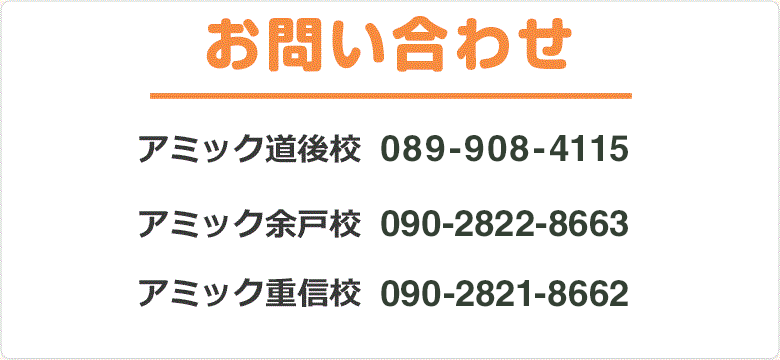カテゴリー:未分類
The Day Wikipedia Went Dark 英会話・英語 アミック
When I’m looking for a topic for my weekly blog post, the first place I head to is *drum roll*… Wikipedia! I know Wikipedia gets a lot of negativity because it can be user edited, (and not always with correctly sourced information), but Wikipedia is truly a wealth of information. I, for one, love their homepage, because it’s the news and history, condensed. It’s up to me to see what piques my interest at that moment. If nothing does, fear not! I can always click “On This Day” and be whirled away to a list of birthdays, deaths, and other anniversaries. I love a good list and usually I can find an interesting read from either the homepage or the “On This Day” feature. I know I’m not the only one who loves Wikipedia. I haven’t gone so far as to create an account and edit articles, after all, I am but a mere plebe when it comes to research. That being said, I’ve used Wikipedia to write these blogs, to do research for essays in high school and college, to win arguments, to check spelling…the list goes on and on. I wondered, what would happen if Wikipedia just went away?
Once upon a time, Wikipedia tested this alternate timeline while protesting SOPA and PIPA, American bills that would censor websites, in 2012. Instead of its usual blue and white theme, the following image was displayed on the homepage:

While I applaud the website for shutting down (aka losing revenue) in response to an unjust bill, a different part of me says, a whole 24 hours without Wikipedia!? What about students who procrastinated and needed to get projects finished? What about people who always have to be right? What about people like me who check the Wikipedia homepage for fun? I suppose without net neutrality, using the internet for personal enjoyment would become a thing of the past anyway. I wish I could find reactions from Wikipedia-users in 2012 to Wikipedia’s black out, but alas, I don’t know how to optimize that search. My reaction? :

英会話・英語 アミック - Five uses of ‘get’
Five uses of ‘get’
Buy / obtain
Get can mean buy or obtain.
- I got myself a new phone last weekend.
- I need to get some new clothes.
Receive
Get can mean receive.
- I just got a message.
- I got a bike for my birthday!
Become
Get with an adjective can mean become.
- I’m getting annoyed.
- It’s got quite hot in here suddenly.
Understand
Get can mean understand.
- I don’t get this joke.
- I don’t often meet people who get this type of movie.
Arrive
Get can mean arrive.
- I need to get home early so I’m off!
- What time will you get here?
Umm-ing and like-ing your way to fluency – 英会話・英語 アミック
Recently at Amic, we did evaluations of our students’ progress with English. One of the criteria in which me measured our adult students on was their ability to ‘use hesitation mechanisms’ when speaking. In English, classic examples of these would be ‘um’, ‘uh’, ‘like’, ‘I mean’, ‘well’, and similar noises we make to show the other person we aren’t finished speaking and are thinking about what to say next.
Although it’s not something I’ve ever seen explicitly taught in an English textbook, I think using these filler sounds is an important step for any language learner wanting to sound like a native speaker. I may even start correcting my high-level students who fill their hesitation with etos and anos and see if it’s something that can be truly taught, or if they are something that just get ‘absorbed’ after listening to and interacting with enough native English speakers and media.
All of this also made me curious as to what filler sounds are used in other languages, and Wikipedia did not disappoint with me with their thorough list. Here are some interesting ones I came across:
- Chinese: en (um), zhège (“this”)
- Dutch: ehm (um), dus (“thus”), eigenlijk (“actually”)
- French: euh (um), bah, ben (“well”), tu sais, t’sais (“you know”)
- Persian: eh (um), bebin (“you see”), yaʿni (“I mean”)
- Polish: eee (um), no (“well”), wiesz (“you know”)
- Swedish: öhm (um), asså/alltså (“therefore”, “thus”), liksom (similar to “like”)
- Turkish: yani (“meaning…”), işte (“that is”), and falan (“so on”)
the greatest and best #1 stream of consciousness English conversation blog post ever **READ NOW** 「英会話・英語 アミック」
Well, dear reader, as of now I have nothing to say. Really. Nothing.
(silence)
**************
If I felt like this in an actual face-to-face social situation, I would perhaps feel obligated to make nervous small talk in the hope that it eased the tension of the silent room. But online, surrounded by Earth’s HIVE of BUZZING information peddlers and broke content creators (the information and “content” probably falling somewhere between dire and excruciatingly meaningless), I’ve found silence is golden. Shiny-soul-warming-morning-sunshine-on-your-face-after-a-good-sleep golden.
But do not fret, dear reader. I’ll have something to say next week. Something so unbearably important to tell everyone that I’ll practically race my own shadow to my laptop followed only by the hammering of my icy, air-conditioned fingers descending on the keyboard like a hailstorm in an attempt to convey everything as accurately as possible before it slips my mind forever.
Okay, no.
Not really.
Joe
Summer is still here
I can’t feel my favorite season coming to its end, but it is almost September. The wee hours are a little cooler that I sleep with my windows open. As I rode my son to nursery school today, the cicadas weren’t chirping as loud. Maybe they know that their time has come and that the typhoons are approaching us.




